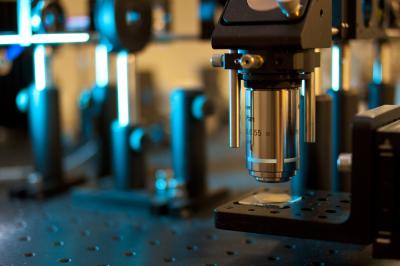Harvard engineers have developed a novel device called plasmonic nanotweezers that utilize laser light to capture nanoparticles. The new device could facilitate the study and isolation of minute particles such as viruses.
Ken Crozier, who serves as the Harvard School of Engineering and Applied Sciences’ Associate Professor of Electrical Engineering, is the principal investigator. Crozier team has reported about the plasmonic nanotweezers in the journal, Nature Communications. The innovative equipment generates intensified forces more effectively than conventional optical tweezers and avoids the problem of overheating.
 This is the optical table in Ken Crozier's lab at Harvard SEAS. Credit: Eliza Grinnell / Harvard SEAS
This is the optical table in Ken Crozier's lab at Harvard SEAS. Credit: Eliza Grinnell / Harvard SEAS
To overcome the limits and drawbacks of the traditional optical tweezers, the Harvard engineers have substituted glass with a silicon piece coated with copper and then with gold using raised gold pillars. Due to their better thermal conductance than glass, these materials function as a heat sink.
The plasmonic nanotweezer decreases heating of water by roughly 100 times and creates hotspots on the pillars’ top edges where polystyrene balls with diameter down to 110 nm can be trapped by the engineers. The engineers have also detected that the trapped particles can be rotated around the pillars by spinning the linear polarizer placed on the optical table whereupon they performed the study. They have extended their study by using a circular polarizer in place of the linear polarizer and what they have detected is the constant and automatic movement of the particle around the pillar.
An electromagnetic field around the pillar generates an optical force to drive the particle. Even though, the velocity of the electromagnetic field is nearly 1014 rotations/s, the poise between the fluid drag and the optical force generates a particle terminal velocity of 5 rotations/s. The advancement in devices for trapping and controlling nanoparticles expands the range of prospective applications in biophysics. However, the detection and measurement of the movement of such nanoparticles are still a challenge to the researchers.